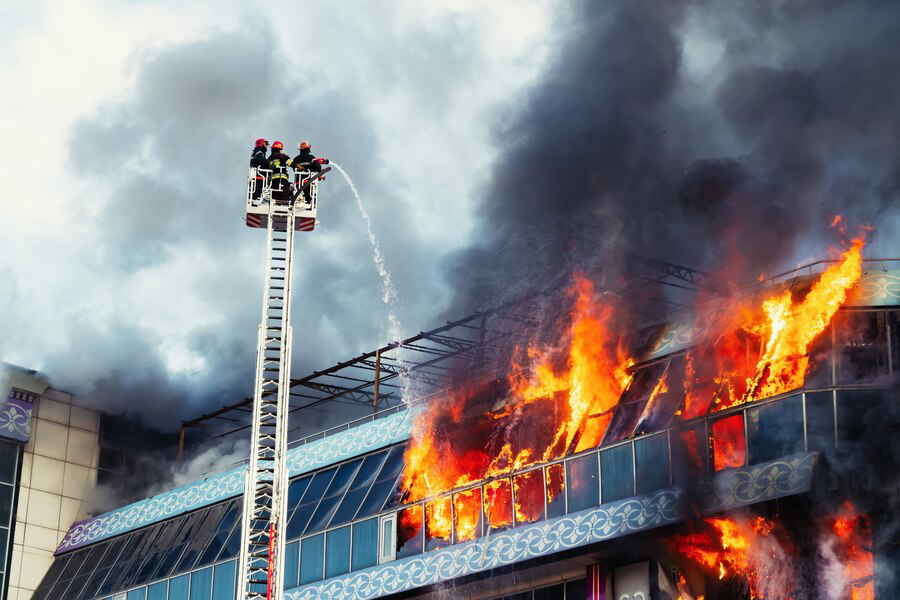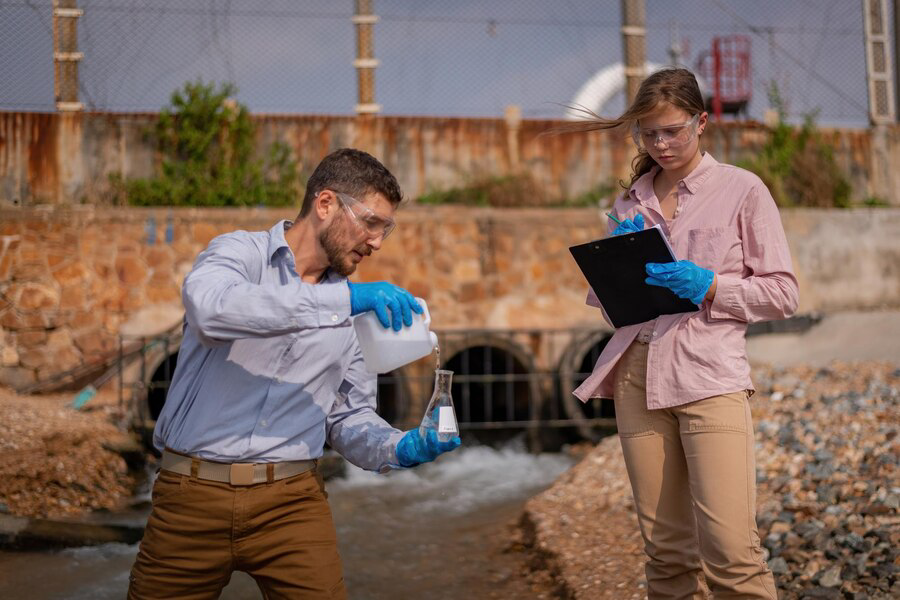In the scorching crucible of adversity, where flames dance with nature’s fury, emerges the need for resilience. “Resilience in the Face of Fire: A Guide to Successful Restoration Projects” is a beacon of hope amid the charred landscapes. This guide navigates the intricate web of challenges posed by wildfires, offering a roadmap to rejuvenation and triumph. Delve into the transformative journey of restoration, where every scorched acre becomes a canvas for renewal. As we confront the aftermath of fire’s relentless embrace, this guide unveils strategies, insights, and stories that illuminate the path toward vibrant resurgence. Embrace the profound tales of ecosystems rising from the ashes, as we unravel the profound tapestry of resilience, forging a future where flames ignite not only destruction but also the seeds of regeneration.
Understanding Ecological Dynamics

In the intricate tapestry of ecosystems, understanding ecological dynamics is paramount. Delve into the profound interplay between flora, fauna, and natural elements to unravel the delicate relationships that sustain life. Recognizing the nuanced impact of fire on biodiversity is crucial, highlighting the need for a careful balance in restoration efforts. Restoration success hinges on a deep comprehension of these intricate dynamics,
guiding interventions that promote resilience and biodiversity in the aftermath of wildfires.
Strategic Planning for Restoration
Effective restoration demands strategic planning that spans immediate response, long-term recovery, and sustained management. This involves exploring the integration of cutting-edge technologies, community participation, and adaptive strategies to address the dynamic challenges posed by wildfires. By developing comprehensive plans, restoration initiatives can navigate complexities, fostering a resilient environment that withstands future fire events. It’s a forward-looking approach that combines innovation and community involvement to create a blueprint for successful restoration, ensuring ecosystems recover and thrive over time.
Community Engagement and Empowerment
Within communities affected by fires, community engagement and empowerment are transformative forces. Fostering a sense of shared responsibility creates a united front against the aftermath of wildfires. The promotion of collaboration, education, and communication empowers residents to actively participate in the restoration process. By recognizing the community as a vital stakeholder, restoration efforts gain momentum, ensuring a holistic approach that not only heals the land but also strengthens the bonds within the community. This shared responsibility becomes a driving force, enhancing the overall efficacy and sustainability of restoration endeavors.
Native Species Rehabilitation
Prioritize the reintroduction of native plant and animal species to rehabilitate ecosystems. Understand the pivotal role these species play in maintaining ecological balance and enhancing resilience against future fire events.
Understanding the Importance of Native Species
Native species are the backbone of ecosystems, contributing to biodiversity and ecological balance. Explore the critical role they play in mitigating the aftermath of wildfires, forming the foundation for successful restoration efforts.

Prioritizing Reintroduction Strategies
To rehabilitate ecosystems, prioritize the reintroduction of native plants and animals. Examine strategies that consider habitat preferences, migration patterns, and ecological niches, ensuring a comprehensive approach that fosters resilience and supports biodiversity.
Ecological Balance and Resilience
Dive into the intricate relationships between native species and their environment. Understand how their presence enhances ecological balance, making ecosystems more resilient to future fire events. Explore success stories where native species rehabilitation has led to vibrant, sustainable landscapes.
Building Sustainable Futures
As we prioritize native species rehabilitation, envision a future where ecosystems thrive. This approach not only restores habitats but also creates a resilient foundation for the coexistence of diverse flora and fauna, fostering a harmonious balance in our natural world.
Native species rehabilitation is more than ecological restoration; it’s a commitment to sustaining the intricate dance of life. By prioritizing these species, we build resilient ecosystems that withstand the challenges of wildfires, ensuring a vibrant and balanced future.
Soil Health Restoration
Investigate soil health as a cornerstone for successful restoration. Implement practices that replenish nutrients, prevent erosion, and promote the regeneration of a fertile foundation for plant life, crucial in the post-fire recovery process.
Unveiling the Importance of Soil Health
Soil health is a cornerstone for successful restoration after wildfires. Delve into the significance of soil as a living ecosystem, exploring its role in nutrient cycling, water retention, and providing a fertile ground for post-fire recovery
.
Implementing Regenerative Practices
Explore regenerative practices that replenish nutrients, prevent erosion, and promote the regeneration of soil health. From cover cropping to mulching, understand how these techniques contribute to the restoration of a fertile foundation crucial for plant life.
Fostering Post-Fire Recovery
Investigate the connection between soil health and post-fire recovery. Examine case studies highlighting successful restoration projects where soil-focused interventions played a pivotal role. Understand how a healthy soil foundation accelerates the recovery of vegetation and ecosystems.
Sustainable Practices for the Future
As we embark on soil health restoration, envision a future where sustainable practices harmonize with the land. Explore the potential of regenerative agriculture and soil conservation efforts, creating a legacy of fertile landscapes resilient to the impacts of wildfires.
Soil health restoration is not just about nurturing the ground beneath our feet; it’s a commitment to building resilient landscapes. By implementing regenerative practices, we ensure that soil becomes a thriving ecosystem, fostering post-fire recovery and sustainable coexistence.
Adaptive Fire Management Strategies
Embrace innovative fire management techniques that incorporate controlled burns, firebreaks, and other measures to mitigate the impact of future wildfires. Tailor strategies to the unique characteristics of each ecosystem for sustainable resilience.
Innovative Approaches to Fire Management
Explore innovative fire management techniques that adapt to the evolving challenges posed by wildfires. From controlled burns to strategically placed firebreaks, discover how these measures mitigate the impact of future wildfires and foster ecological resilience.
Tailoring Strategies to Ecosystems
Recognize the diversity of ecosystems and the need for tailored fire management strategies. Dive into the considerations for different landscapes, understanding how adapting techniques to unique characteristics ensures sustainable resilience against fire events.
Balancing Human and Ecological Needs
Delve into the delicate balance between human needs and ecological preservation in fire management. Explore how communities and ecosystems coexist, emphasizing practices that protect both lives and landscapes. Consider case studies illustrating successful integration.
Sustainable Fire Management for the Future
Envision a future where fire management becomes a sustainable, evolving practice. Explore community-based approaches, technological innovations, and international collaborations that contribute to a world where wildfires are managed adaptively, ensuring the well-being of ecosystems and communities.
Adaptive fire management is not just a response to wildfires; it’s a commitment to harmonizing human needs with ecological resilience. By tailoring strategies, we ensure a balanced coexistence, where landscapes withstand the challenges of fires, fostering a sustainable future.
Monitoring and Early Detection Systems
In the ever-evolving landscape of fire management, implementing sophisticated monitoring systems is imperative. Robust early detection mechanisms, seamlessly integrating technology, satellite imagery, and community-based reporting, become the frontline defense against potential fire threats. These systems not only provide swift alerts but also facilitate prompt responses, enabling firefighting teams to intervene before wildfires escalate. By merging cutting-edge technology with local insights, we forge a formidable shield against the destructive force of fires, minimizing damage and protecting ecosystems. The synergy of data-driven analysis and community engagement creates a resilient tapestry, ensuring that landscapes remain vigilantly guarded against the unpredictable nature of wildfires.
Cultural Preservation in Restoration
Restoration projects, rooted in cultural preservation, go beyond ecological revival; they become a testament to honoring the symbiotic relationship between communities and their environments. Recognizing the significance of indigenous knowledge and cultural practices, restoration endeavors become a holistic journey that respects the land’s heritage. This approach ensures that restoration is not a mere ecological process but a harmonious blend of traditions and environmental stewardship. By acknowledging the historical bonds between communities and their landscapes, restoration becomes a cultural narrative, preserving not only biodiversity but the essence of identity and connection that defines the spirit of the land.
In the transformative journey outlined in “Resilience in the Face of Fire: A Guide to Successful Restoration Projects,” we emphasize the vital role collective efforts play in rejuvenating landscapes post-wildfire. Our commitment at Precision Restoration, Inc. extends beyond ecological revival, encapsulating a holistic approach rooted in community engagement, technological advancements, and cultural preservation. As we navigate the intricate dynamics of restoration, we invite you to join hands in fostering resilient ecosystems. For inquiries, collaborations, or further guidance, contact us at Precision Restoration, Inc. Our dedicated team stands ready to contribute to the preservation of our natural heritage. Call us at 844-245-7979 or reach out online. Together, we fortify the spirit of resilience and restoration, shaping a sustainable future for Edmond, Oklahoma, and beyond.



